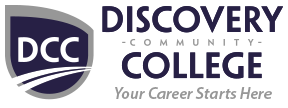
Canada’s population is both growing and aging, and practical nurses are in demand to provide care for patients suffering from a range of ailments. Because of these factors, job opportunities for practical nurses are good in British Columbia in the coming years.
Practical nurses care for those who are injured, sick, or suffering from any number of disabilities, and provide a range of care services. In some cases, their patients may be more susceptible to experiencing a stroke, which is why practical nurses should be familiar with the symptoms and signs of a stroke.
If You’re in a Practical Nursing Career, You’ll Need to Be Able to Spot a Stroke
If you’re considering practical nurse training, knowing how to spot the signs of a stroke is important. Every year in Canada, 62,000 strokes occur, making it the third leading cause of death for Canadians. When a stroke occurs, it’s critical to recognize it in time in order to get people the immediate medical attention they require. This is essential to preventing adverse and often serious long-term effects.

What Is a Stroke?
A stroke is a medical emergency characterized by the interruption of blood supply to a part of the brain. Because blood provides oxygen and vital nutrients to the brain, the brain requires a steady supply of blood in order to function. When this is cut off, the brain cells start to die. The death of brain cells can have adverse effects in both the short and long term, leading to brain damage and, in some cases, death. If a patient survives a stroke, they may be left with effects such as paralysis or weakness in one side of their body, or problems with mood, memory, and cognitive functioning. Stroke survivors may also have lasting issues with speech, balance, and coordination, and may experience fatigue.
Identify Warning Signs with the F.A.S.T. Method
Using the F.A.S.T. method is a great way for those in a practical nursing career to remember all of the symptoms of a stroke, as well as what to do when a stroke occurs.
Face: Be sure to check the patient’s face and ask them to smile. If their mouth droops, this could be a sign of a stroke.
Arms: If a patient attempts to lift both arms and one of them droops down, this is another sign that they have undergone a stroke.
Speech: Ask the patient to repeat a phrase. If they can’t understand you or if their speech is slurred at all, this is another warning sign.
Time: If a patient is experiencing any of the above symptoms, it’s crucial to get them medical attention as fast as possible. In the case of a stroke, time is of the essence, as the faster the patient has access to treatment, the more the extent of brain damage caused by the stroke can be mitigated.
Additional signs of a stroke can include a sudden onset of vision loss, lack of balance, and in some cases, fever, hiccups, nausea, or vomiting.
Are you thinking about attending nursing college?
Check out Discovery Community College’s program options today.

